Appearance
Dark Light
Did You Know?
Conventional farmers use around 300 different pesticides to grow foods that are sold in supermarkets everyday.

Urban Gardening - 2022
It's been another challenging year. As if a pandemic weren't bad enough, a Russia/Ukraine war and soaring inflation have put many of us on edge. Groceries are more expensive; it's difficult for many people - especially those on a low or fixed income - to put food on the table, let alone get good-quality (expensive) produce at grocery stores. Vegetable gardening relieves some of that financial strain -- plus, it's fun!

Had some unwelcome guests at my community garden plot this year -- rabbits! I've been growing soybeans for the past few years and never had any problems until now. My plot is surrounded by plastic orange safety fence, but the rabbits were able to chew through. I ended up losing about half of the soybean harvest.
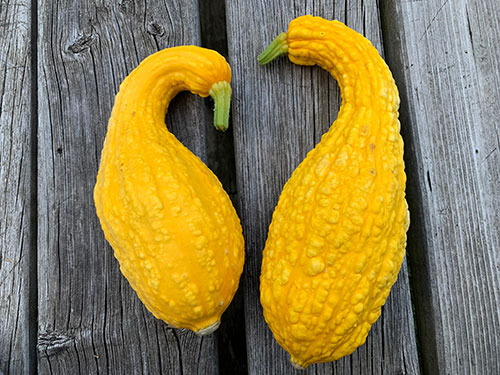
Yellow crook-neck squash is a type of summer squash. The plant can take up a lot of space, so leave at least 1 m2 per plant. The squash looks cool/weird - the bumpy skin is edible, but don't wait too long to harvest the squash or the skin gets hard. It tastes mildly sweet (reminds me of zucchini), and the texture is firm. They are tasty stir-fried, or roasted with a bit of olive oil and salt. There was a small infestation of cucumber beetles early in the season, but the squash turned out okay.
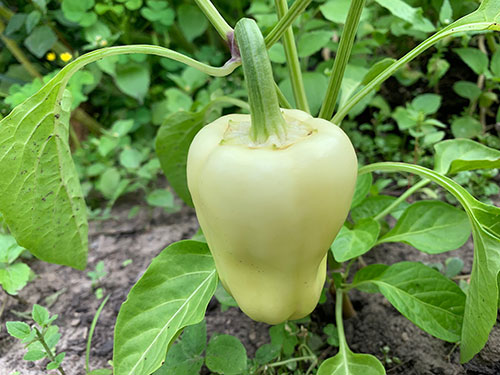
White sweet pepper. I saved the seeds from some peppers that I got last year at St. Jacobs Farmer's Market. It's sweet (compared to the green variety) and the skin is very thin. Great for eating raw or in a quick stir-fry. The plants were compact (a couple of feet tall), and yielded 2-3 peppers per plant.
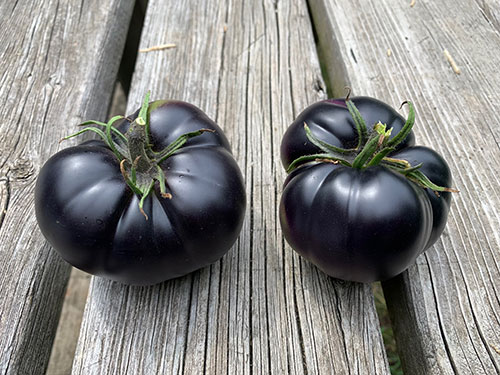
Black Beauty tomato. Saw these in a seed catalog and the striking black color caught my eye. These are the darkest of the "dark type" tomatoes that I've grown. The yield was good; each plant had multiple clusters of 4-5 tomatoes. When fully ripe, the tomato turns almost completely black, with just a hint of dark purple on the bottom. It has a balanced acidity and full-bodied sweetness with fruity notes (yeah, I know I sound a bit like a wine snob :) ). Overall, a great tasting tomato!
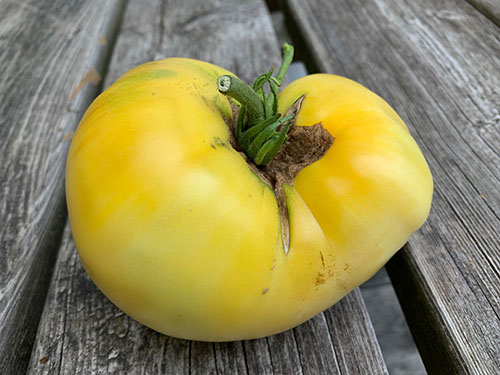
Great White tomato. This variety provides a nice color contrast to the Black Beauty (above). It turns yellowish-white when fully ripe. I was intrigued by the description in the seed catalog: "it reminds one of a mixture of fresh-cut pineapple, melon and guava". I tasted none of these flavors :( It's not a bad tasting tomato, it just wasn't that great. The tomatoes were huge, though (1-2 lbs each), and the yields can be very high.
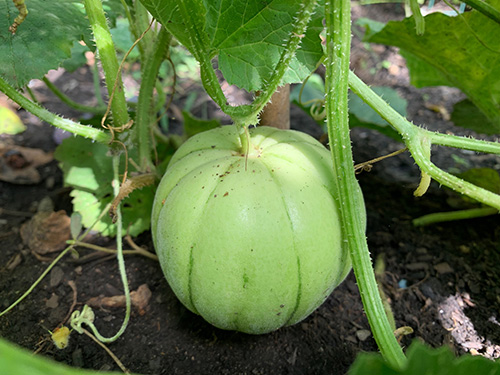
Kiku Chrysanthemum melon. Originally from Japan - this rare, productive, and beautiful melon grew well in the dry and hot summer this year. The seedlings took a while to get going, but grew fast once the weather warmed up. Each plant can yield 4-6 small melons, but if you prune the side shoots and just keep the main vine, you'll get a couple of larger melons. Keep the soil moist as the melons are growing, but avoid overwatering when they start to ripen.
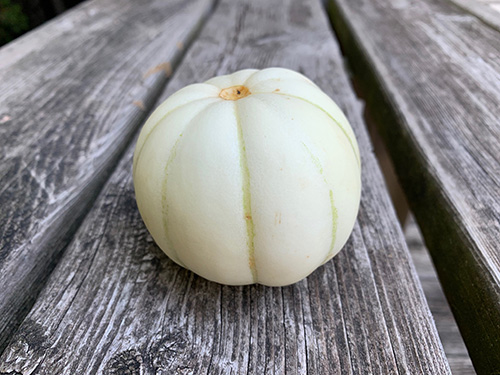
You can tell when the melon is ripe when the rind turns white and the melon comes off the vine easily with a light pull. They're slightly smaller than a softball and are good personal size melons.
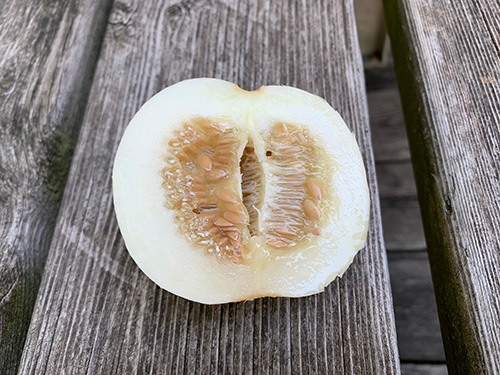
The rind/skin is very thin and you can peel it like a pear. When fully ripe, the flesh is soft - almost creamy - with a refined sweetness to it. The flavor is unique -- it tastes like a pear flavored honeydew melon.
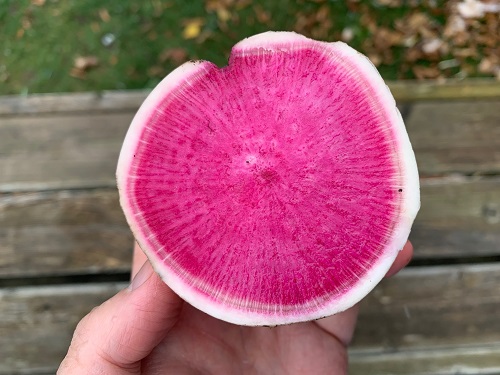
Chinese Red Meat Radish. Sometimes known as "watermelon radish", they have white-green skin and attractive, bright red flesh. Grown in late summer/early autumn, these radishes do well in cool weather -- I harvested them in mid-November when overnight temps were around 0C. The crisp flesh has a mild sweet & spicy flavor; they can be eaten raw, but are also delicious pickled.
